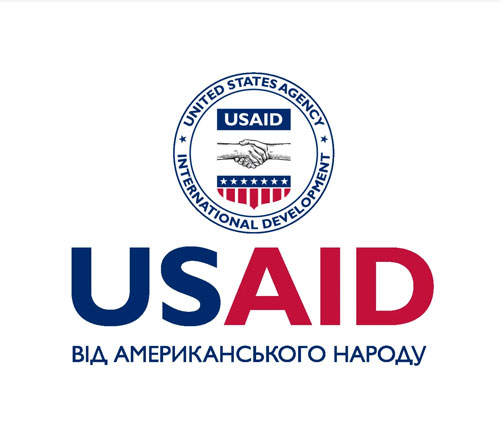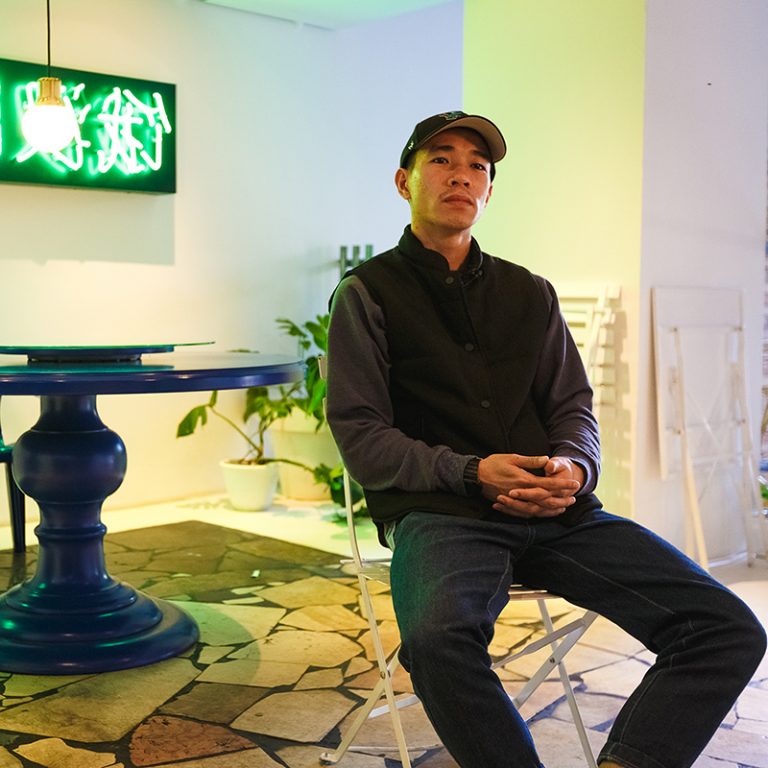Vietnamese diaspora around the world started to form actively in the middle of the 20th century, during the First and the Second Indochina Wars. The Soviet Union became one of the destinations for migration workers. Most of the Vietnamese living in Ukraine today came to work in plants and factories between the 1960s–90s and later decided to stay, gradually bringing their family members from postwar Vietnam. This is a story about the most assimilated generation of Vietnamese: most of them were born and raised in Ukraine, got their education here; they live active social lives here, while preserving the language and traditions of their ancestors.
Ukraine is one of many other countries around the world where Vietnamese diaspora exists. A lot of Vietnamese also live in the US, Canada, European countries, Belarus, Russia, or Central Asia. In Ukraine they have been living since the times of the Soviet Union, when they moved to the Soviet republics as a part of the state programme.
The biggest community in Ukraine is formed by the Vietnamese living in Kharkiv, where they unite around the Buddhist temple. Chuk Lam Pagoda (Vietnamese for “bamboo forest”) is one of the largest in Europe. The second city with the biggest share of Vietnamese population is Odesa. Kyiv possesses the third place. Overall, there are over 4,000 of Vietnamese in Ukraine. This figure can be even higher, considering that data is based on the statistics from the 2001 census.

Tolia To
For the last few years a Vietnamese To An Tung, or Tolia as he is called in Ukraine, has been working as a waiter at the Kytaiskyi Pryvit (“Chinese Hi”) restaurant in the centre of Kyiv.
“I’m a Vietnamese who works at a Chinese restaurant”, as he describes himself jokingly. Tolia was born near the Lithuanian border 30 years ago, in the early 1990s, when his parents left postwar Vietnam for Soviet Union, looking for a job. They first went to Russia and Poland with their newborn son, but soon they moved to Ukraine — to work at the factory.
“We moved when I was just a few months old. After spending a couple of months in Moscow, we came to Kyiv. And we’ve been living here ever since.”
Tolia recalls his parents’ stories about their challenging adaptation at the new place: the work at the factory was hard, and there were problems with immigration documents. Most of those who used to work at factories are now market sellers. Tolia’s parents are no exception to this. They work as sellers at one of the biggest clothing markets in Kyiv. Next to Vietnamese, there are sellers from China, Armenia, Azerbaijan, and other countries.
“My father keeps saying that his fate always brings him back to Ukraine, no matter where he goes. This country gives them a sense of freedom. Their life in Vietnam was difficult, even mentally. And in Ukraine they really enjoy their living.”
The first one from Tolia’s entire family to move to Ukraine was his grandfather, who came to work as a doctor. He practiced traditional medicine. Later on he brought his son To Chung Ziong (Tolia’s father) and other family members. This is a very common model: the one who comes first to the country later on brings most of his family. Majority of the Vietnamese migrants around the world unite around their communities.
“When you are far from home, it’s worth sticking to your own people, this way it’s much easier to settle in. Most of the arriving immigrants are someone’s relatives, that’s why we all stick together.”
A while ago Tolia would always celebrate Vietnamese holidays with his family and the members of the local community. These days, he says, the community has thinned and there are less of such celebrations than before.

To Chung Ziong, Tolia To’s father.
For Vietnamese migrants it is very important to give their children good education to ensure that they won’t have to work as hard as their parents did upon their arrival to Ukraine. According to Tolia, young Vietnamese who were born in Ukraine are different from those who were born and raised in Vietnam — due to the influence of Ukrainian environment.
“In Ukraine, for example, it is expected that people at the age over 18, as soon as they enter the university, become fully independent and responsible for their own lives. In Vietnam this is not the case. You can be over 50 in Vietnam, and your mum will still be forcing you to eat something.”
Family is above all for Vietnamese, which is also enforced by their religious beliefs. Ancestor worship, along with Buddhism religious tradition which is also followed by Vietnamese, is one of the earliest forms of religion, and it’s based on the beliefs that the dead may possess the ability to influence the fortune of the living.
“When a person dies, he or she stays among us forever and helps us. Every Vietnamese has an altar at home, as it is believed that if you want to thank the deceased or express your gratitude you can do it through the fire, smoke, and ashes.”
Tolia recalls how in his teens he often used to play football with his Vietnamese friends; this was one of the uniting factors that gave them the sense of community. They were organising tournaments, and their parents would come to support them.
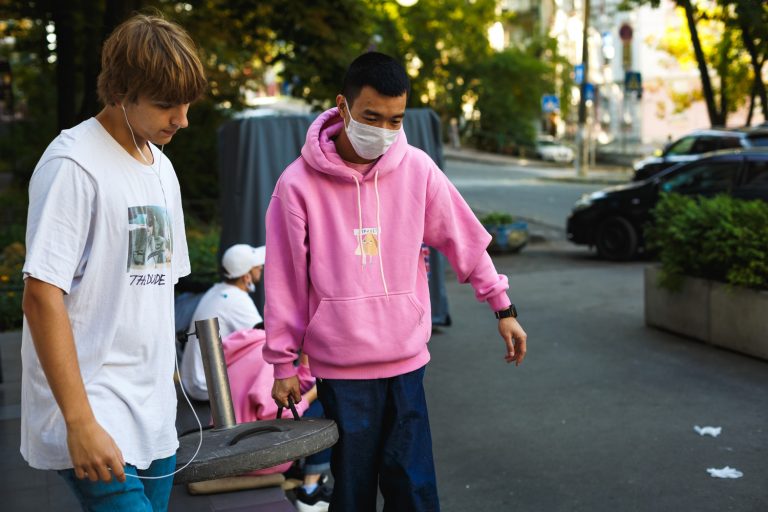
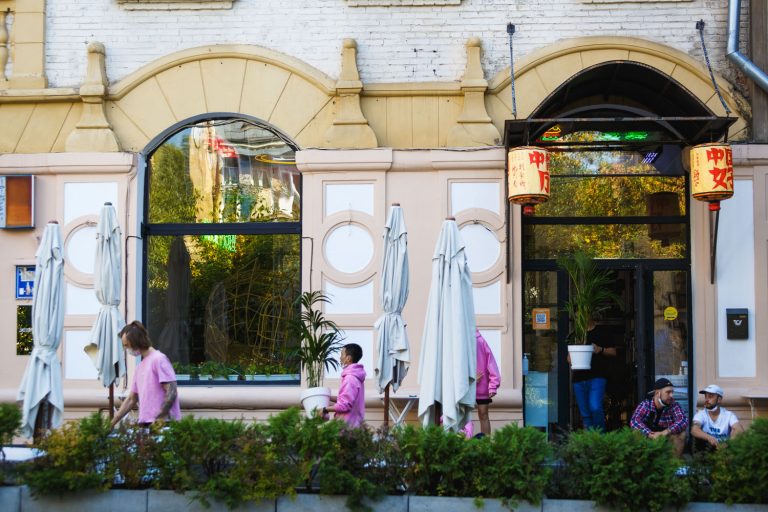
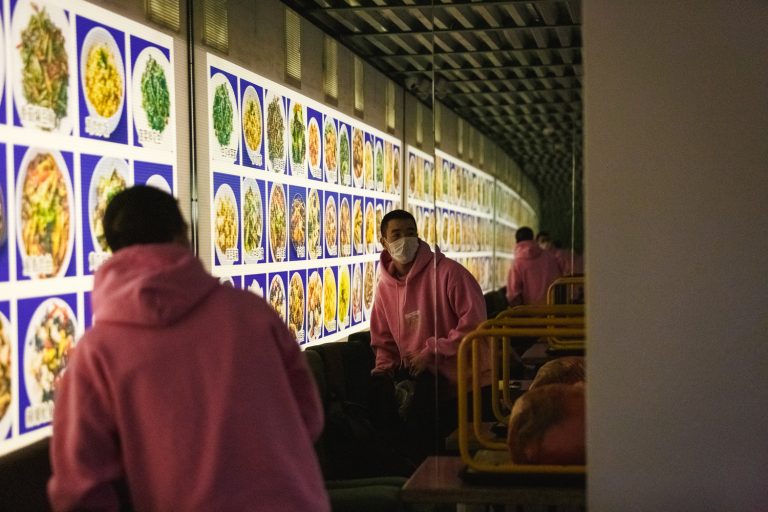
slideshow
In Year 7 Tolia got transferred to the so-called Vietnamese school — a Ho Chi Minh Specialised School (named after the country’s first president who united South and North Vietnam — ed.). He studied Ukrainian, English, and Russian there. He could have studied Vietnamese as well, but Tolia learned his native language in his early years from his brother.
Tolia was four when he went to Vietnam for the first time. He did not know anyone there, not even his cousins, who had never visited him in Ukraine. He recalls how everyone greeted him in his parents’ village; everyone knew him, but he did not know anyone. It was important for Tolia to speak Vietnamese. “Otherwise how could I speak to people in my own country?”, the young man recalls.
When Tolia grew up, he went to Vietnam for two years. He believes that for every Vietnamese who was born in another place it is important to visit the country of his ancestors to understand who they are — the people of Vietnam. He says he did not really like it there.
“It was quite difficult for me in Vietnam mentally. We are too different from one another: our education, mentality, culture. I guess this is also because of the continuous wars which were in our country.”

Tolia’s homeland is Ukraine, as he himself claims, so he plans on staying here, starting a family and raising children. But according to the Vietnamese customs and traditions as well.
“You should not forget your origins: no matter where you were born, how you were raised, and what culture you adopted, you should remember your origins. That’s why I’m going to tell my future kids about our traditions.”
Because of the way he looks Tolia witnessed some racial prejudice in his teens, but people around him always supported and protected him. This problem is long gone, he says.
The generation of Vietnamese who were born in emigration is much more assimilated than their parents’ generation. This is what Tolia also points out, while talking about his identity:
“I feel about 70% Ukrainian and about 30% Vietnamese. I guess I see it this way because I was born here. Also it makes me feel more comfortable. But I don’t mind being Asian, that’s cool.”

Vietnamese in Ukraine
In the middle of the 19th century, France had colonised a part of the Vietnamese lands but later allowed Japan to occupy them. The first wave of the great Vietnamese emigration occurred due to the expulsion of the French colonisers in the 1950s. They were followed by their Vietnamese supporters, who also left the country.
Over the next quarter century many Vietnamese fled the country because of the war and the long-term tensions between the post-colonial South Vietnam and the socialistic North Vietnam, which became known in history books as the Second Indochina War. The second wave of Vietnamese emigrants set their course mostly for the USA, Western Europe, and the republics of the Soviet Union.

The war severely weakened Vietnam’s economy, so people were leaving abroad en masse, looking for jobs and better lives. The Soviet Union, which had established diplomatic relations with Vietnam by then, required an injection of relatively cheap workforce. And so in April 1981 the two countries made an agreement “On sending and admitting Vietnamese citizens for professional study and work to the enterprises and establishments of the USSR”. In their home country, Vietnamese could pass the exams, and those with the high marks could be admitted to the Soviet Union, including Ukraine, to study or work.
Back then Vietnamese were working in Donbas, Odesa, Kherson, Zhytomyr, Zaporizhzhia, and other Ukrainian cities. Each place had a specially appointed person who would teach migrants Russian and educate them politically and culturally at the same time.
Most of the older Vietnamese who now live in Ukraine are Russian-speaking. The largest Vietnamese communities live in Kharkiv, Odesa, and Kyiv. They include about 4,000 people in total.
Each Vietnamese family has a home altar. In Vietnamese homes, the altar might be taking the entire room upstairs, or it could be just a small shelf on the ground floor. Twice a month on the full and the new moon Vietnamese light up the incense sticks at the altar and pray, addressing the souls of the deceased. At temples this ritual looks more impressive: it is accompanied with music, burning of fake money, and sometimes even with theatrical performances.
Vietnamese have a lot of traditional festivals. The main ones are the New Year celebrations, which they have several during the year. Among them are Tết Nguyên Đán, or Spring festival (the day that follows the Vietnamese New Year is considered the first day of spring), and Tết Trung Thu, or Mid-autumn festival. Women’s Day and World Children’s Day are also almost mandatory holidays.

Lena Nguyen
Nguyễn Thái Thanh, or simply Lena, was born in Kyiv, where her parents moved to from Vietnam about three decades ago. They first worked at a factory sewing shoes, and later they began selling clothes at the market in Kyiv. And this is what they still do. At first, Lena was helping them to do selling, but after obtaining higher education, she started making her own living — as a photographer and a co-founder of the clothing brand, which she created together with her friends. They are now designing a collection of basic casual clothing for women.
“This brand was founded by the four of us. It is called Motbon, which is “one and four” in Vietnamese and also has a special meaning. That is: one thought, one project, one idea that united four independent, creative, and talented friends.”
Lena speaks Ukrainian and Vietnamese. She learnt Ukrainian in kindergarten and at school, but she speaks only Vietnamese with her parents at home.
“At school I was educated according to Ukrainian traditions, just like any other people here. But at home you switch over to being a Vietnamese, and all Ukrainian fades out.”
Traditional expectations from Lena of her Vietnamese parents are: to study well, to graduate from University, to find a decent job, to start a family. Until a Vietnamese girl gets married, she has to live with her parents. Any civil partnerships are not recognised and considered immoral, as Lena explains.

Lena has never lived in Vietnam. She could visit her relatives during the school holidays but would always return home. She first went to Vietnam when she was two. Next time — when she was five, and she spent three months there. But initially, as she admits, she did not really like visiting her relatives.
“It’s like when Ukrainian children go to their grannies’ village cottages for summer. My visits to Vietnam were just the same, I kept saying: ‘I don’t want to go, it’s hot there, there’s nothing to do there!’ You sit there at your grandma’s, she’s watching television all day long, and you don’t know where to put yourself, what to do, because you have no friends there. You don’t know anyone except your relatives.”
Back then Lena did not speak Vietnamese yet and was only able to use a few phrases in everyday life. Over time, when she grew older and learnt the language, she began to love visiting her parents’ land as this gave more opportunities to travel around the country and learn it from the inside.
And yet, Lena recalls that she felt “a stranger among her own” in Vietnam. Despite speaking good Vietnamese, she had a strong accent which was very distinct for the locals. The language is quite different in various regions of Vietnam: it is more literary in the North and is full of dialects in the South, as Lena explains. There are over 100 ethnic groups in Vietnam. Their language can be so different that interlocutors from the different parts of the country may barely understand each other.
“They don’t just use some words with their local meaning, like “brew” or similar. No, they have their own specific dialects there in Vietnam, just like Mancunian, or Scouse, or Cockney in English.”

Lena says that those Vietnamese who were born and raised abroad would even look different, when compared to locals. In summer, for example, local Vietnamese often wear covering clothes to avoid suntan. Lena didn’t, and that made her stand out.
At the same time back at home, in Kyiv, Lena was the only Vietnamese at her school and in the entire district. But nobody mocked or teased her. Sometimes somebody could call her “Chinese” but she would explain that she’s not a Chinese and what’s the difference between a Chinese and a Vietnamese.
Today Lena uses her difference to her advantage. She stands out among others in Ukraine, and that is quite helpful, in the fashion business in particular. Knowledge of Vietnamese also helps. It can also be used as a secret code, when friends want to share something privately.
“Vietnamese is my second language, not my master one, and sometimes I use something like a macaronic language — when you mix up Russian, and Vietnamese. It’s quite fun.”
Vietnamese diaspora in Ukraine is a small and close one, so they all know each other. One way or another, their paths cross at the community events, which are usually attended by nearly everyone.
“We don’t need to say to someone: ‘Oh, hi! What’s your name?’ We all know each other since childhood. And at some point we just started talking to one another. Our parents know each other well: they know everything about each and every family, where they are from, who are their children. It’s like in a small village, where people know each other and meet from time to time.”

Eugene Chan
Chan Thanh Hieu, or, as Ukrainians call him, Eugene or Zhenia, was born in Vinnytsia and moved to Kyiv when he was three. Like most other people, his parents moved to Ukraine after the Soviet-Vietnamese agreement was signed, in 1981. In particular, his father came here to study. First Eugene’s parents were working at a factory and then began selling at the market.
“My father told that to get some selling place at the market they had to arrive there at night and occupy a place where they would start selling in the morning. There were also stories about quarrels over the selling places taken by others, about clashes. So to be on the safer side, my parents would sometimes stay in the car overnight and in the morning they’d be selling at that place.”
Zhenia says that those Vietnamese who arrived to Ukraine later or those who speak Ukrainian poorly follow in the footsteps of their friends and parents, who have been living in the country longer. And so they too start as the market sellers or similar. Those young people who were born in Ukraine have much more opportunities. Zhenia, for example, married a Ukrainian girl, which was very unconventional from a traditional point of view of Vietnamese community.
“There are parents who are very strict about this matter, and there are more loyal ones. My parents were somewhere in the middle. But as soon as I introduced Katia to them, they told me how great she was. And they accepted her.”
After their marriage Kateryna moved in to Zhenia and his parents’ house, as people usually do in Vietnam.
“In general, this is quite common for Vietnamese families when a son brings his bride to his parents’ house and they all live together. This might sound unusual for Ukraine, but this is totally fine for Vietnamese. It’s always better to stay altogether, to help parents and be like one big family — to dine together. Vietnamese like this way of living very much.”

At first, family dinners with Zhenia’s parents were something unusual for Kateryna. She was amazed how they operated chopsticks and special scissors to cut the food instead of a knife.
The Vietnamese cuisine is very rich and diverse. They have nearly 500 of the rice dishes alone. Their main course is usually based on rice or noodles. Among the most well-known ones are bánh chưng — a rice cake with pork, beans, and sesame seeds, wrapped in banana leaves, — and pho — a soup with rice noodles, beef or chicken broth, and garlic. There are countless variations of the recipes because the cuisine of the North, South, and Central Vietnam is very different in its ingredients and specifics of cooking.
Zhenia went to Vietnam for the first time when he was three or four. Back then he perceived his parents’ home country as something fun because there were men pulling around carts with ice cream or cotton candy and there were other children running in the yard. When he came back with his wife, he felt a huge difference.
Kateryna and Zhenia recall how they wanted to see the other side of Vietnam, to get to know people and their lifestyles. So they stayed there for a year.
“We were always looking for development in the design and creative industry. But if you want to work in Vietnam you’ll end up in the retail or hospitality sector. So at some point we lost our interest and decided to come back to Ukraine.”

My Ukrainian name
Zhenia, Eugene or Chan Thanh Hieu — are the three variants of the same person’s name. The latter is the one stated in the passport. To An Tung, or Tolia, explains:
“I would not call it a tradition (to have an additional name — ed.). It’s more of a habit, because we communicate with Ukrainian- and Russian-speaking people. And we made up those names so that it would be easier for them. I got my name — Anatolik — in the kindergarten. It was just simpler to call me that.”
Vietnamese names are formed differently. While in Ukraine we have first, patronymic and last name, in Vietnam they have last name, middle name and first name.
Usually a person is called by their first name. And sometimes affectionate home variations can be added to these three names, the ones parents give to their children. Lena, for example, used to respond to her short home name Cún, instead of her first name.
“My full name is Nguyễn Thái Thanh. My parents call me Cún at home, which means “puppy” or “little dog”. My nanny called me Lena when I was little.”
These names — Zhenia, Lena, and Tolia — is an example of assimilation of the Vietnamese youth, who were born in Ukraine, of their integration into Ukrainian society without forgetting their origins. Zhenia and Tolia consider themselves more Ukrainians than Vietnamese. “I consider myself a Ukrainian of Vietnamese descent” — concludes Lena.
supported by
Material prepared with support of United States Agency for International Development (USAID)
